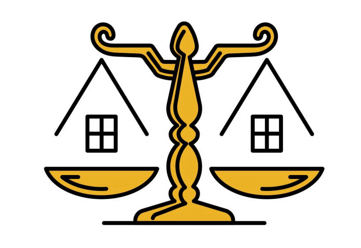When purchasing property, one of the most important distinctions is whether it is freehold or leasehold property. These terms define the nature of ownership and the rights you hold over the property. This guide explains the key differences between freehold and leasehold properties, helping you make informed decisions.

Step 1: Understanding Freehold Property
What is Freehold Property?
Freehold property refers to a form of ownership where the buyer owns the land and the structure on it outright. The owner has full rights to the property indefinitely.
Key Features of Freehold Property
- Ownership Rights: The owner has complete ownership of the property and the land it stands on.
- No Time Limit: Ownership is perpetual and does not expire.
- No Landlord Involvement: The owner is not subject to any restrictions or obligations to a landlord.
- Transferability: The property can be sold, leased, or inherited without additional permissions.
Advantages of Freehold Property
- Greater control and flexibility.
- No ongoing ground rent or lease charges.
- Higher resale value.
Considerations for Freehold Property
- Typically more expensive than leasehold.
- Responsibility for maintenance and repairs lies with the owner.
Step 2: Understanding Leasehold Property
What is Leasehold Property?
Leasehold property refers to ownership for a fixed period under a lease agreement. The land remains under the control of the freeholder (landlord), and the leaseholder has rights only for the duration of the lease.
Key Features of Leasehold Property
- Time-Limited Ownership: Ownership is granted for a specific period, such as 99 or 999 years.
- Ground Rent: Leaseholders often pay ground rent and service charges to the freeholder.
- Restrictions: Lease agreements may impose restrictions, such as prohibiting major alterations.
Advantages of Leasehold Property
- Lower upfront cost compared to freehold properties.
- Often available in desirable urban locations.
Considerations for Leasehold Property
- Lease renewal can be costly and complicated.
- Property value may decrease as the lease period diminishes.
- Limited control over modifications and usage.
Step 3: Key Differences Between Freehold and Leasehold
| Aspect | Freehold Property | Leasehold Property |
|---|---|---|
| Ownership | Complete ownership of land and property. | Ownership for a fixed term under a lease. |
| Duration | Perpetual, with no expiration. | Limited to the lease period. |
| Costs | Higher initial cost, no recurring fees. | Lower cost, but includes ground rent. |
| Control | Full control over property. | Subject to lease terms and restrictions. |
| Resale Value | Generally higher resale value. | Value may decrease with shorter leases. |
| Maintenance | Owner’s responsibility. | Shared or managed by the freeholder. |
Step 4: Which Option is Right for You?
Consider Freehold If:
- You want complete control over the property.
- You prefer no recurring lease-related expenses.
- You are looking for a long-term investment with higher value.
Consider Leasehold If:
- You’re on a budget and seeking affordability.
- The property’s location is more important than ownership type.
- You’re comfortable with shared responsibilities and restrictions.
Final Thoughts
The choice between freehold and leasehold property depends on your financial goals, long-term plans, and lifestyle preferences. While freehold properties offer complete ownership and flexibility, leasehold properties provide an affordable entry into sought-after locations with manageable costs. By understanding these differences, you can make a well-informed decision that aligns with your needs.
Call to Action
Need expert advice on property transactions or understanding ownership rights? Chaman Law Firm specializes in real estate law and can guide you through every step of your property purchase. Contact us today via email at chamanlawfirm@gmail.com or call us on +234 8065553671 or +234 8096888818. Let us help you secure the right property for your needs!


